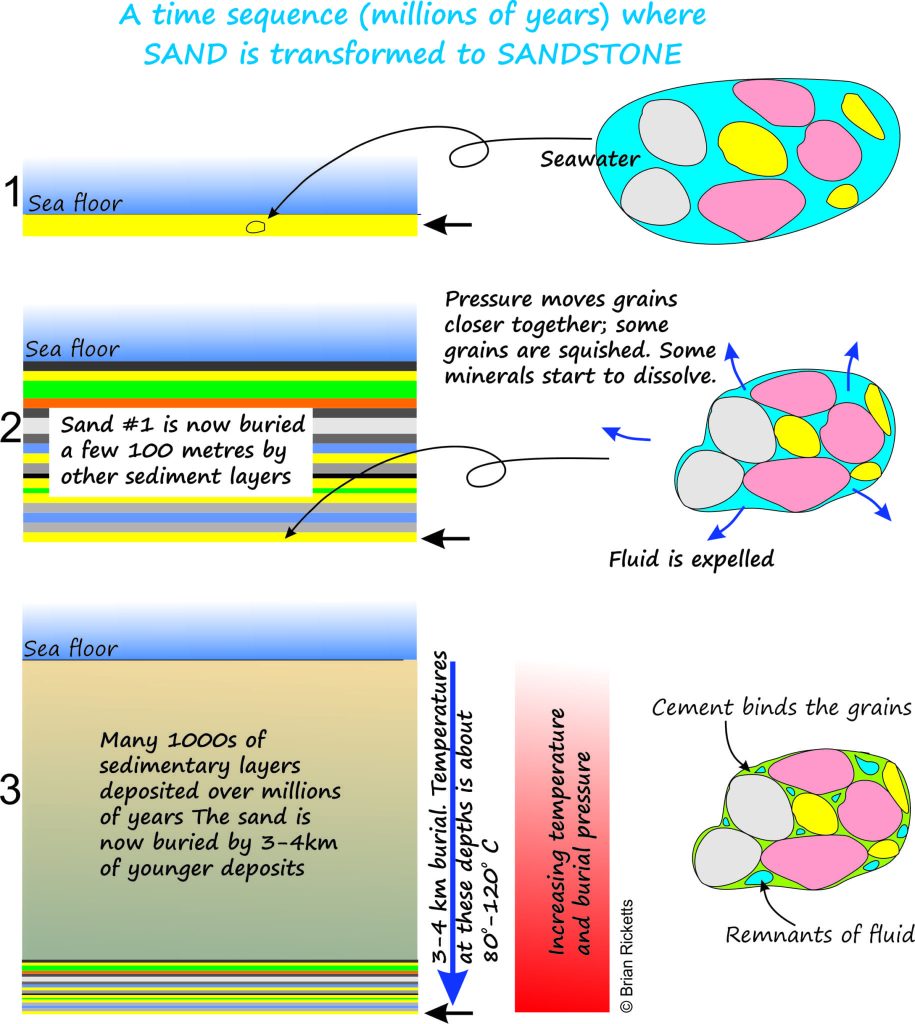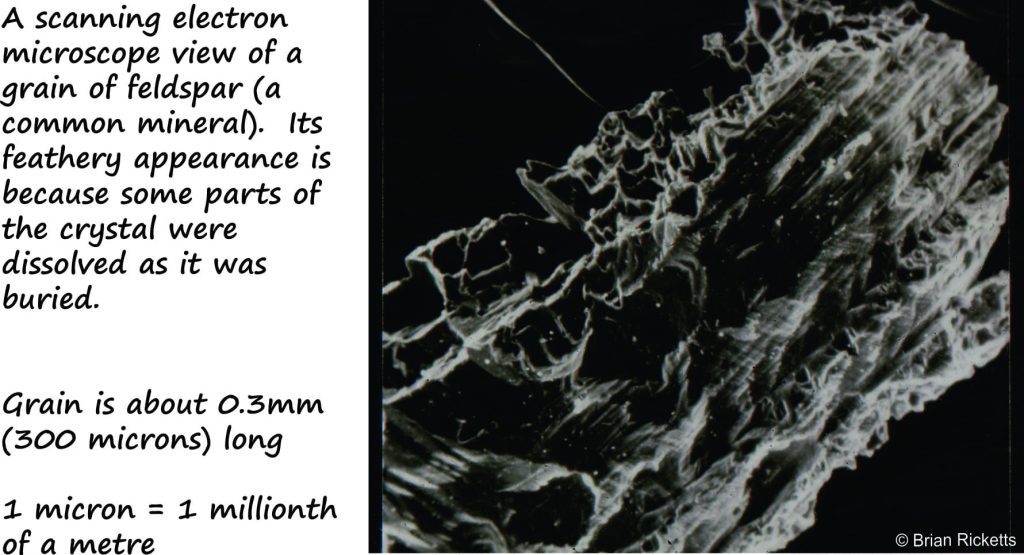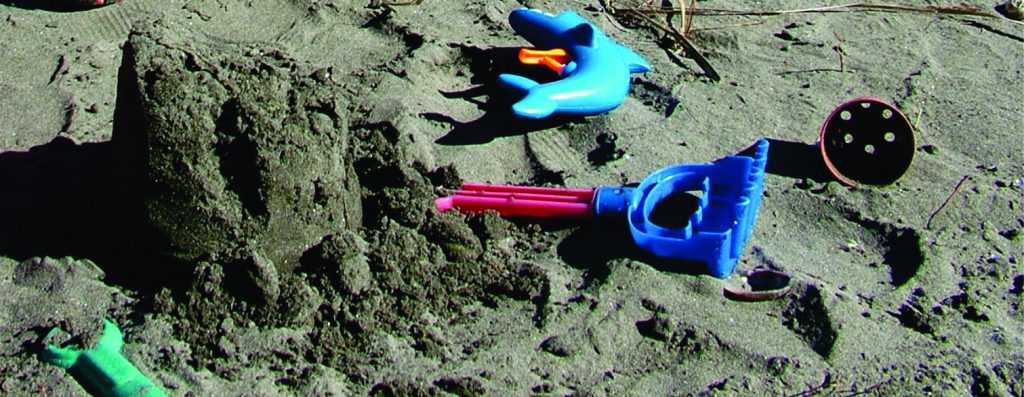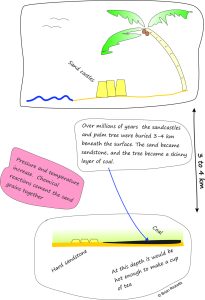You are at the beach, by the river, in the garden; you walk through soft sand, squish through mud, pull weeds and sow seed in soil. They’re all soft, squishable, digable. But throughout the 3400 million years of our Earth’s known sedimentary record, countless millions of times, these same deposits have hardened to rock.
The transformation of soft sediment to hard rock is one of those fascinating geological journeys that we actually cannot witness directly – it takes place deep within the earth’s crust (there are a few exceptions) over eons. However, like tourists we have learned to take snapshots of the different stages of this journey, in the first instance by examining rock outcrops at the surface, and second by drilling into the crust. By looking closely at rock samples using different kinds of microscopes or chemical analyses, we can decipher some of the processes that lead to this transformation. The transition from sediment to hard, hammer-ringing rock, is a marvel of nature that we usually take for granted. This post encourages you to think beyond the obvious, the assumed. Geologists commonly refer to this transformation as Diagenesis.
The transformation
There are three important ingredients, or variables, that contribute to the transformation of sediment into rock: pressure, temperature, and chemical reactions. All of these variables operate together as the soft sediment is gradually buried beneath other layers of sediment.


Schematic of sediment burial by successive strata, compression and water expulsion. The sand grains are ultimately moved closer together.
Our starting point on this burial journey is the earth’s surface where a layer of sand (may be with a little bit of mud mixed in) is deposited on the sea floor; this is a very common situation in the geological world, but in fact it could apply to any kind of sediment deposited almost anywhere.
Over millennia, our layer of sand is buried by other layers of sediment (or volcanic rock – it doesn’t really matter what these layers are – they could be mud, silt, coal, gravel, volcanic lava). The cartoon shows one of the first, really fundamental changes that takes place; the weight of the overlying sediment layers compresses, or compacts our sand such that all the sand grains move closer together. This also means that the layer is thinner than when it was at the sea floor. An additional, and very important process that takes place during compaction is that fluid (usually seawater) will also be squeezed out from between the sand grains. Fluid that is expressed in this way will play an important role in chemical reactions.
Other kinds of sediment can be compressed even more than sand. For example, layers of mud or peat can be up to 10 times thinner than when they were first deposited. A one metre-thick peat layer may end up as coal only a few centimetres thick)
We know that temperature increases as we probe deeper in the earth’s crust – the global average is about 3oC per 100 m depth. So as our sand layer is buried it also becomes warmer. Increasing temperatures usually mean that chemical reactions are faster; in fact some reactions do not begin until a certain temp has been reached (the threshold temperature). A classic example of this is the conversion of organic matter (peaty material, dead critters) to the various components of oil and gas (hydrocarbons). The optimum temp for this process is between 80o-120o C, which in many places means the sediments have been buried beneath 3 km or more of rock.


Diagrammatic detail of cement that forms pores, in some cases close to the surface, and in other cases during burial.
Even at these depths (usually salty) groundwater will flow through the remaining pores and fractures. As it does so, minerals are precipitated (crystallized). Typical chemical reactions that contribute to the formation of ‘rock’ include the growth (precipitation) of quartz and calcite crystals, and various types of clay minerals. These minerals ‘cement’ the sand grains together, much like concrete, except concrete hardens 1000s of times faster.
The four images below show some of the common minerals we see in sandstones that have formed during the ‘hardening’ process. These views are from a Scanning Electron Microscope; the SEM allows us to see the intricate details of crystals and sand grains.


Scanning Electron Microscope view of a feldspar grain, seriously etched (dissolved) along cleavage and twin planes. This process goes part way to creating secondary porosity
It is worth keeping in mind that the transformation of sediment to sedimentary rock is part of a continuum. If burial continues relatively unabated then metamorphism results in a whole new suite of minerals and textures. Metamorphism can begin as shallow as 3-4 km and continue to more than 40km depth in the crust. At these depths, rock and fluid temperature commonly exceed 1000o C
So next time you see a sandstone or limestone, try to imagine the journey it has been on. And next time you are at the beach, try to imagine what journey the sand there might be looking forward to.
Note added: An essential tool used to decipher the history of rocks, is the polarizing microscope. Here are three posts that look at how this is done, some of the common minerals, and what we can tell of the rock history – like the transition from sand, to sandstone:





Lovely bit of summarizing basic geological processes with nice simple illustrations. Excellent teaching material. Simple is beautiful, it is an art to be able to leave unnecessary stuff out.
Thanks Dirk. I’m really enjoying putting these kinds of post together.
First of all, being bored at work does pay well if you have a Smartphone and you browse through blogs.Amazing information with facts thoughtfully incorporated within. Definitely going to come back for more! 🙂
Glad to help relieve the boredom
Very helpful! Thank you!
This post gets a lot of views. Thanks for the
feedback
It’s so interesting that mud or peat can be compressed up to ten times thinner than when it was first deposited on the ocean floor. Does that also create sandstone or does it make something else? I’ll keep doing research on this topic because it interests me.
Hi, If you mean does the compression of mud and peat produce sandstone, then the answer is no. But if sand deposits are present along with the mud or peat deposits, then the same processes will produce sandstone along with mudstone (or shale) and coal.